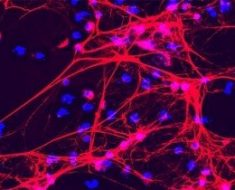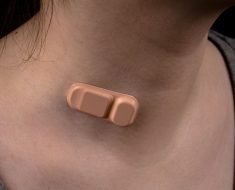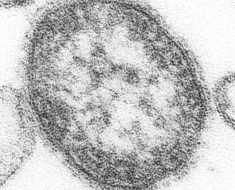By Jeyashree Sundaram, MBA
Passive smoking or involuntary smoking refers to the unconscious inhalation of smoke that emerges as a result of others burning cigarettes, cigars, or pipes. This inhaled smoke is also termed as known as environmental tobacco smoke (ETS) or second-hand smoke (SHS). Mostly children are affected by passive smoking at a higher rate than adults.

Credit: Oterra/ Shutterstock.com
SHS comprises about 4,000 chemicals. These chemicals are extremely harmful and more than 50 of these can cause cancer. When children breathe in SHS, they are also exposed to these chemicals and can have increased problems of coughs, colds, tooth decay, ear infections, and respiratory disorders.
Toxicology of SHS
SHS comes from two types of sources: mainstream smoke (MSM) and side stream smoke (SSM). Mainstream smoke is that exhaled by smokers during smoking. Side stream smoke is the smoke released from the tip of a lighted cigarette, pipe, hookah, etc. SSM is more harmful, because the smoke passes directly without filtration, and accumulates in the atmosphere.
The California Environmental Protection Agency reported in 2005 that SSM has 21 types of particulate matter components and 19 gas-phase compounds with known cancerous and non-cancerous health impacts such as cardiac arrhythmias, pulmonary edema, and neurologic and hepatotoxic effects.
Health risk in infants
Most commonly, infants along with their smoker parents or relatives are affected by the smoky environment in their home. These infants show severe symptoms with long-lasting effects leading to dangerous abnormalities in the body. The following are the impacts of passive smoking on infants:
- Low birth weight: Non-smoking mothers exposed to passive smoke may have high risk of giving birth to infants with low birth weight (below 2.5 kg).
- SIDS: SHS increases the risk of sudden infant death syndrome (SIDS), which is an unexplained and unexpected death during the first 12 months of an infant’s life. Toxic chemicals like nicotine and cotinine in SHS can damage the infant’s brain and lungs by interfering with the breathing process.
- Respiratory illness: Infants up to 1.6 years that are exposed to SHS have increased chances of developing respiratory ailments like bronchiolitis, bronchitis, and pneumonia.
The Environmental Protection Agency (EPA) of USA states that between 0.15 and 0.3 million infants and toddlers are affected by SHS exposure and around 7,500 to 15,000 of them are frequently hospitalized.
Impact of passive smoking in school-going children
Children with nonsmokers at home can also be affected by ETS, as they may be exposed to smoke in public places like cars, buses, babysitter’s house, school, park, playground, friend’s or relative house, shopping malls, etc.
School-going children when exposed to SHS might develop the following problems:
Ear infections
The child is easily affected by SHS resulting in cold, middle-ear infection, or glue ear infections. They get irritation in the Eustachian tube, a tube that links the middle ear with the pharynx. This leads to ear infection and causes fluid discharge with pain; if left untreated, it leads to hearing loss.
Respiratory disease
- Children might show symptoms like wheezing, chronic phlegm, chronic cough, upper respiratory infections, and breathlessness.
- Children have more chances of getting asthma, when exposed to SHS. They might have more frequent and severe asthma attacks that can put the child’s life at risk.
- The lung function is disturbed, causing difficulty in breathing; such children might not achieve complete inspiration and expiration compared to other normal children. This dysfunction can also persist in adulthood.
Cardiovascular disease
Children suffer highly from ischemic heart disease leading to stroke (20%–30% likelihood), when exposed to SHS. The normal function of the heart is disturbed with abnormality in blood flow, resulting in the risk of myocardial infarction. Sudden cardiac arrest can occur in children because of the damaged endothelium of blood vessels caused by sticky thrombocytes in blood.
Cancer and other diseases
Children have high risk of certain cancers such as brain cancer, lymphomas, leukemia, lung cancer, etc. SHS also causes several other ailments like cataract, meningococcal disease, sinusitis, influenza, eye irritation, sore throat, allergies, etc.
Cognitive damage and behavioral changes
- SHS exposure has drastic effects on children’s learning ability, with around 21.9 million children deficit in reading, visuospatial reasoning, and math. The IQ score of children born to women smokers is 2.87 points less than the IQ point of children born to women nonsmokers.
- Children are usually affected by attention deficit hyperactivity disorder (ADHD) when their mother is exposed to SHS during pregnancy. ADHD is a neurobehavioral disorder like learning disability, hyperactivity, inattention, and impulsivity found in children.
- SHS also promotes behavioral problems in children such as anxiety, depression, aggressive behavior, and hyperactivity. Male children are mostly affected by conduct disorder. According to a study by the Centers for Disease control and Prevention, children of ages 9-11 are put at greater risk of behavioral and cognitive damage.
Children more exposed to SHS become more easily addicted to smoking habits at an early age by stimulation of nicotine in the brain. Thus, passive smoking can cause dangerous disorders in children. Providing a smoke-free environment will render a healthy living atmosphere to the child.
Sources:
- www.ncbi.nlm.nih.gov/pmc/articles/PMC1758471/pdf/v052p01081.pdf
- http://www.nejm.org/doi/full/10.1056/NEJM199903253401204#t=article
- www.cdc.gov/…/index.htm
- www.betterhealth.vic.gov.au/…/passive-smoking
- www.healthychildren.org/…/Dangers-of-Secondhand-Smoke.aspx
- https://www.nhs.uk/chq/Pages/2289.aspx
- http://no-smoke.org/document.php?id=212
- www.cancer.org/…/secondhand-smoke.html
- https://www.quit.org.au/articles/improve-your-familys-health/
- https://www.childrenshospital.vanderbilt.org/services.php?mid=6589
- http://www.entnet.org/content/secondhand-smoke-and-children
- https://www.ncbi.nlm.nih.gov/pmc/articles/PMC2758663/
- https://www.ncbi.nlm.nih.gov/books/NBK44321/
Further Reading
- All Smoking Content
- Smoking and Effects on the Stomach
- Smoking and Pregnancy
- Effects of Passive Smoking on Children’s Health
- Carcinogens in Cigarette Smoke
Last Updated: Feb 27, 2019
Source: Read Full Article





